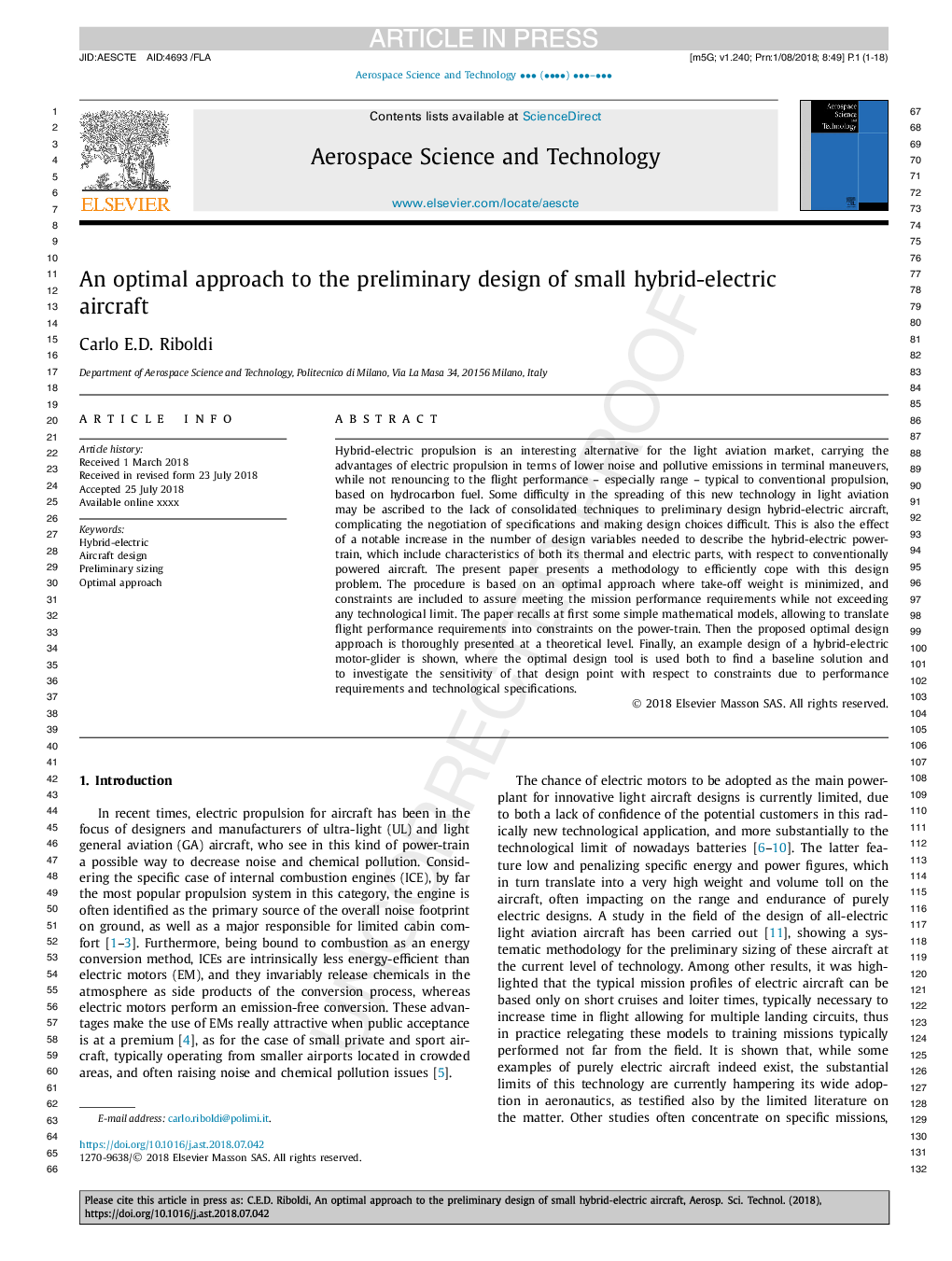| Article ID | Journal | Published Year | Pages | File Type |
|---|---|---|---|---|
| 8057173 | Aerospace Science and Technology | 2018 | 18 Pages |
Abstract
Hybrid-electric propulsion is an interesting alternative for the light aviation market, carrying the advantages of electric propulsion in terms of lower noise and pollutive emissions in terminal maneuvers, while not renouncing to the flight performance - especially range - typical to conventional propulsion, based on hydrocarbon fuel. Some difficulty in the spreading of this new technology in light aviation may be ascribed to the lack of consolidated techniques to preliminary design hybrid-electric aircraft, complicating the negotiation of specifications and making design choices difficult. This is also the effect of a notable increase in the number of design variables needed to describe the hybrid-electric power-train, which include characteristics of both its thermal and electric parts, with respect to conventionally powered aircraft. The present paper presents a methodology to efficiently cope with this design problem. The procedure is based on an optimal approach where take-off weight is minimized, and constraints are included to assure meeting the mission performance requirements while not exceeding any technological limit. The paper recalls at first some simple mathematical models, allowing to translate flight performance requirements into constraints on the power-train. Then the proposed optimal design approach is thoroughly presented at a theoretical level. Finally, an example design of a hybrid-electric motor-glider is shown, where the optimal design tool is used both to find a baseline solution and to investigate the sensitivity of that design point with respect to constraints due to performance requirements and technological specifications.
Keywords
Related Topics
Physical Sciences and Engineering
Engineering
Aerospace Engineering
Authors
Carlo E.D. Riboldi,
